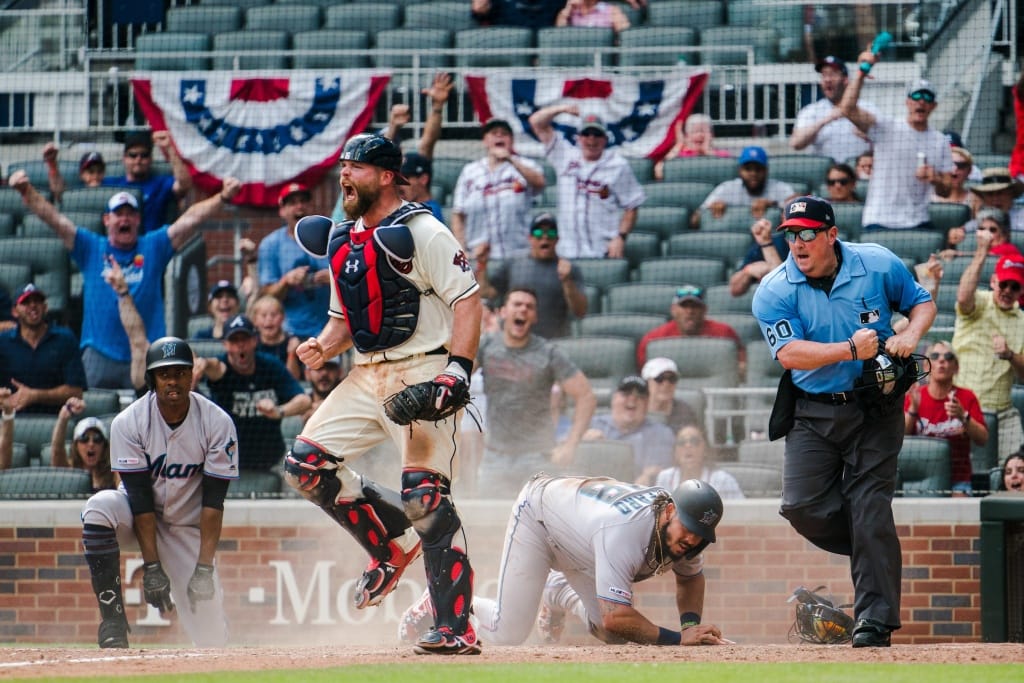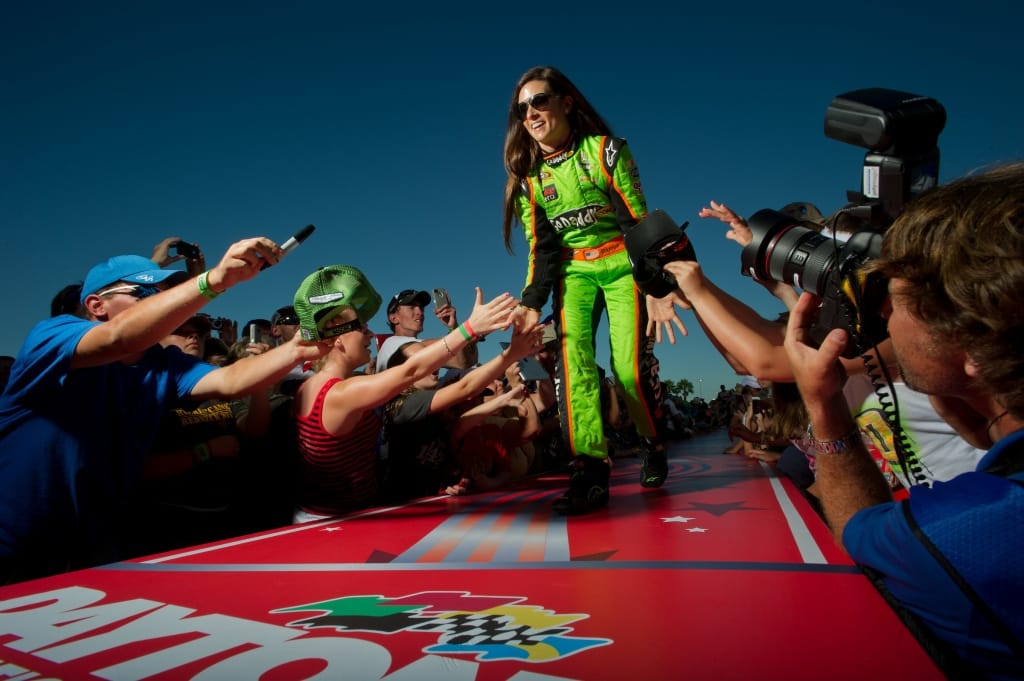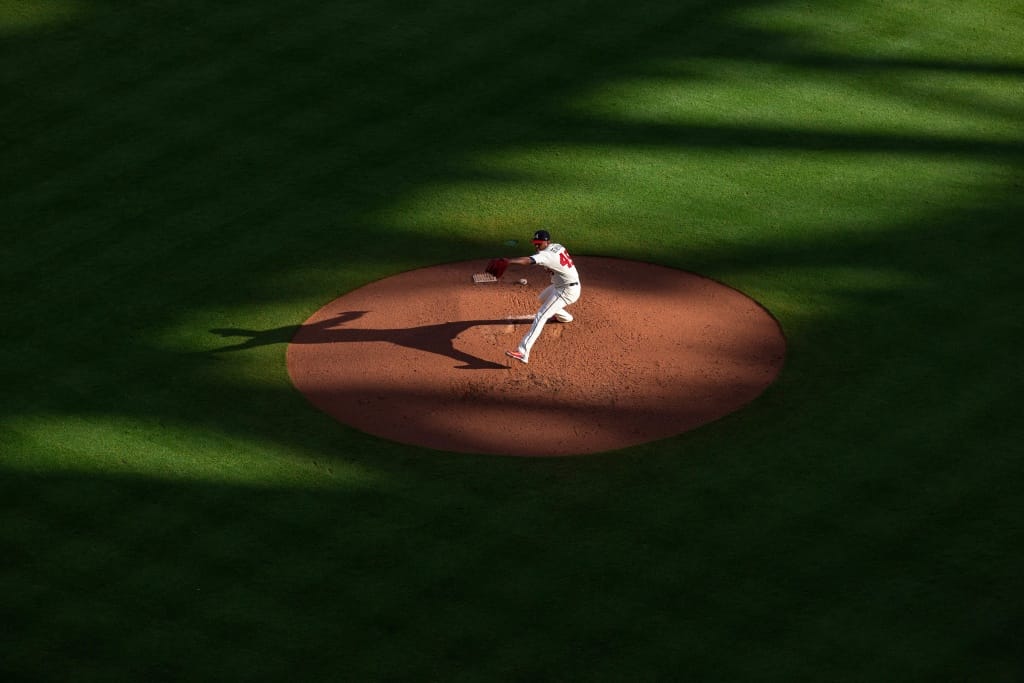
We recently caught up with Kevin D. Liles, a documentary and commercial photographer who covers issues, politics and sports in the South. He regularly contributes to publications like The New York Times, The Wall Street Journal and Sports Illustrated, to name a few. On top of that, he’s currently serving as the team photographer for the Atlanta Braves.
We wanted to know about his background, his process, and about his current gig, as well as what inspires him. He was gracious enough to share his words and photos with us, so let’s dig in.
All photos by Kevin D. Liles
Can you tell us a little about your background?
I found photography when I got a job in 2002 as a general assignment reporter for The Moultrie (Ga.) Observer. Though we had a staff photographer, I was required to take a lot of the photos that accompanied my stories. The paper, a 7,000 circulation daily, issued me a Canon AE-1 and a 50mm lens. It wasn’t long before photojournalism became my passion.
In 2004, I landed a job as staff photographer for The Griffin (Ga.) Daily News, another small daily newspaper. I photographed everything for the paper—sports, news, features, pets of the week, portraits—I can’t emphasize enough how much I learned during my few years there. Though I didn’t have a photo editor, I was involved in going to seminars and workshops, and emailing photographers for advice and critiques. I was fully in love with photography and knew it was my path.
My goal was to work as a staff photographer for a large, metro daily newspaper—but I needed a degree to apply at those kinds of places. So I quit and went back to school full-time to finish my degree at Clayton State University. While there, I started assisting a local photographer, Bob Rosato, who was a staff photographer with Sports Illustrated. I became his full-time assistant while was in school. After graduating in 2011, my dreams of working as a staff photographer for a large daily newspaper (or anywhere, for that matter), looked pretty slim, as the country was in the grips of The Great Recession. Jobs of any sort were hard to come by, and photography positions seemed particularly affected.
So I started freelancing—2012 was my first full year as a full-time photographer and I haven’t looked back.

Brian McCann screams after tagging the Marlins’ Jorge Alfaro out to save the game. Atlanta Braves, 2019
You’re the team photographer for the Atlanta Braves, how did you get the job?
I have covered a lot of sports here in Atlanta and the Southeast over the past several years for clients like Sports Illustrated, The Players’ Tribune, and The New York Times. I had also done some work for the Braves through the previous team photographer. So I guess I seemed like a good fit when the Braves needed someone to step into that role during last season (2018).

Ronald Acuna Jr.. Atlanta Braves, 2019
What does a typical game day look like for you?
Well, for a normal evening game, like 7:20 p.m. start, I arrive to the stadium about 3 p.m. My first order of business is shooting batting practice, which starts around 4-4:30 p.m. That lasts about an hour, and then I have a little time to prepare for the game. Most days that involves catching up on editing, but I also make sure my equipment is ready to go—cards formatted, prepping and cleaning the cameras and lenses, as well as installing any remote cameras. I also start thinking through my plan for the game, like what positions I want to shoot from and during what times.

AJ Clay, 2015. Atlanta Falcons.
You’ve also shot for the Atlanta Falcons—how is shooting a football game different than a baseball game?
For starters, in football, you can shoot from just about anywhere on the field, except behind the benches. In baseball, there are only a handful of field-level spots, known as camera wells or photo wells. So it can be a bit more difficult to make unique images from that vantage point.
And with baseball, plays can happen so unexpectedly. With football, you know when things will happen (though knowing where the play will happen is the tricky part). But in baseball, someone could steal home in the blink of an eye, which would be easy to miss (if you’re focused on the pitcher, for example).

Carrichia Clark and her daughter. Westside on the Rise, 2017
Do you approach every assignment similarly, or is it on a case-by-case basis? For example, how does sports photography differ from your political or editorial assignments?
While political and other editorial assignments differ tremendously from sports in the subject matter, I still approach it much in the same way. I just try and tell the story visually, as best I can. What’s the story? What does it feel like? What are the most important elements to photograph? These are the questions I’m constantly asking myself while on assignment.
I try to shoot every assignment wide, medium, and tight (focal lengths), as well as horizontal and vertical, so that I have variety in my take. Editors, designers, and art directors love having choices, and I like keeping these folks happy.

High school football. The Atlanta Journal-Constitution, 2015
What was your first camera?
Canon Rebel, a film one. I don’t remember the exact model.
What kind of photography gear are you currently using?
I made the switch to Sony earlier this year. I still have a few Canon lenses, but mostly Sony at this point.
Is there a piece of gear you can’t live without?
Oh, that would have to be my Canon 35mm f/1.4 lens. Sony doesn’t really have an equivalent to this lens yet, so I’m still using it. But I just love this focal length. I want to shoot an entire Braves game with that lens.
Have you bought used gear before? Thoughts on buying used vs. new?
I buy lots of used gear (and I’m not just saying that because you guys are interviewing me). The only time I buy new is when I want a warranty, and the price difference between used and new doesn’t justify buying used.

Danica Patrick. USA TODAY Sports, 2013
Can you talk a little bit about your involvement in ATL Photo Night and the local community of photographers?
Sure, I love talking about the community we’ve created with ATLPN. Myself and Ray Jones, another independent photographer here in Atlanta, started ATL Photo Night in 2016 with the goal of investigating the creative process through conversation. It’s a monthly interview-style artist talk, where we get a peek behind the curtain of the creative process. We’re interested in what the photographer was thinking for a particular photograph or project, how they approach subjects, what they do to keep themselves creative in a very competitive industry.
What’s blown us away is just how hungry people were for something like this. Turnout routinely goes over 100, and our attendees come from all walks. It’s so great seeing people who aren’t even photographers show up just because they’re interested in that photographer’s work or the creative process in general.

Julio Teheran. Atlanta Braves, 2018
What kind of assignment would you love to shoot, given the opportunity?
There’s a couple that I would really like to document. The first is the World Series, which I’m hoping will come true this October! Another is one of the two major political party national conventions (RNC or DNC), which is basically the Super Bowl of politics.
Are there any specific photographers or images that inspired you?
Yes for sure. As for photographers, Walter Iooss Jr., Doug Mills, Neil Leifer, Gordon Parks, Michael Williamson, Dan Winters and Greg Foster top my list. I could go on and on about each of them and what they’ve meant to me in my career.
So many images have inspired me over the years, and I would say that some of Parks images’ from the South during the 1950s are some of the most gripping I’ve seen. And Iooss’ photographs, particularly his portraits, of Michael Jordan during the 1990s are absolutely incredible.
Leifer’s mesmerizing photograph of Muhammad Ali standing over Sonny Liston is perhaps the one image that has inspired me the most. What most people don’t know is that photograph was shot on strobes (which I installed a lot of when I was an SI assistant) and a medium format camera. That means that Leifer had only one shot to get that photo—not a motor drive of multiple images. By looking at the photograph, it seems like Ali is standing over him for an eternity, taunting him. But if you watch the video, it’s a very quick movement that Ali makes with his arm. It’s just incredible that Leifer got that image, in focus (no auto focus in 1964) and with one shot. I get cold chills when I think about it.

LSU upset over Auburn. Sports Illustrated, 2018
Any advice to someone who wants to follow in your footsteps?
Professionally, my biggest piece of advice is to be dependable and consistent with clients. A mediocre photographer can be very successful in this freelance world if he or she is always on time, delivers images the client asks for, and does it with a smile. Staying in business has to come first for the dream to happen.
Creatively, I say to make images for yourself, whenever possible. Sometimes, there’s only enough time or the logistics only allow for the images the client wants. But every chance I get, I make images that I want, but only after I’ve gotten what I was sent to do. And many times, the images I make end up being used anyway. The best assignments are when my creative vision aligns with the client wants.
Expanding on staying creative, I will say that working on personal projects can really feed the soul. It’s such an amazing experience to shoot something knowing that there’s no editor to please, no time constraints to worry with, only me, my camera, and the story.
The last thing I would say, is when photographing something where there are many photographers, go where they aren’t as much as you can. Following the pack only gets you the same images as everyone else.

SunTrust Park. Atlanta Braves, 2019




